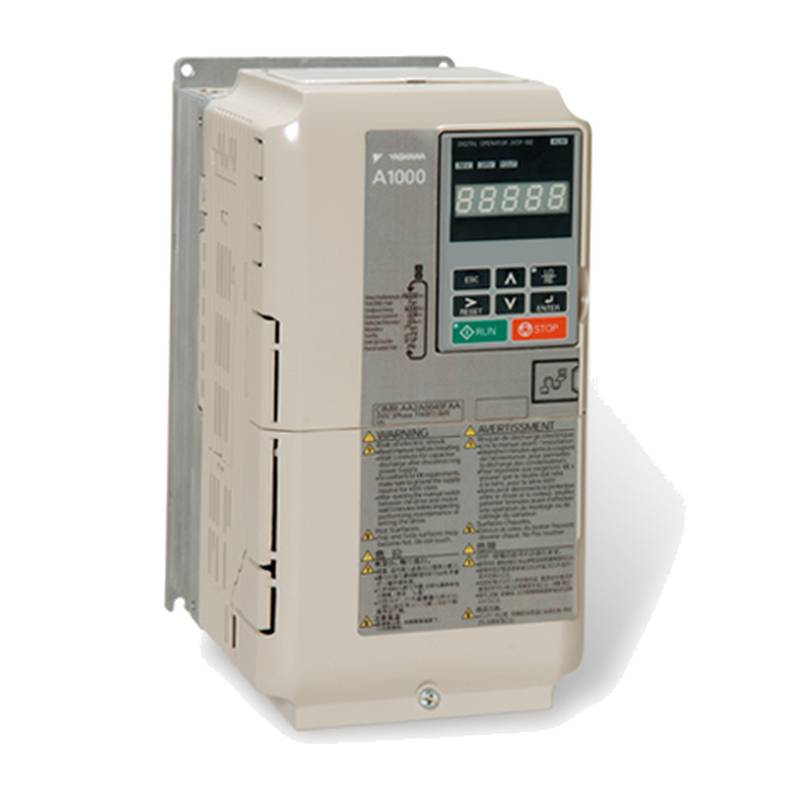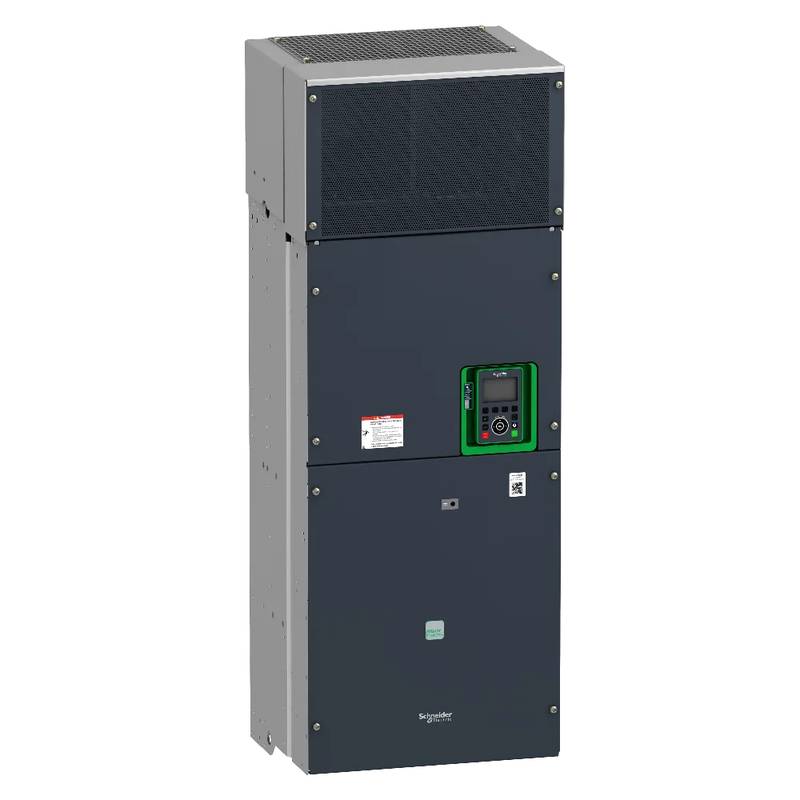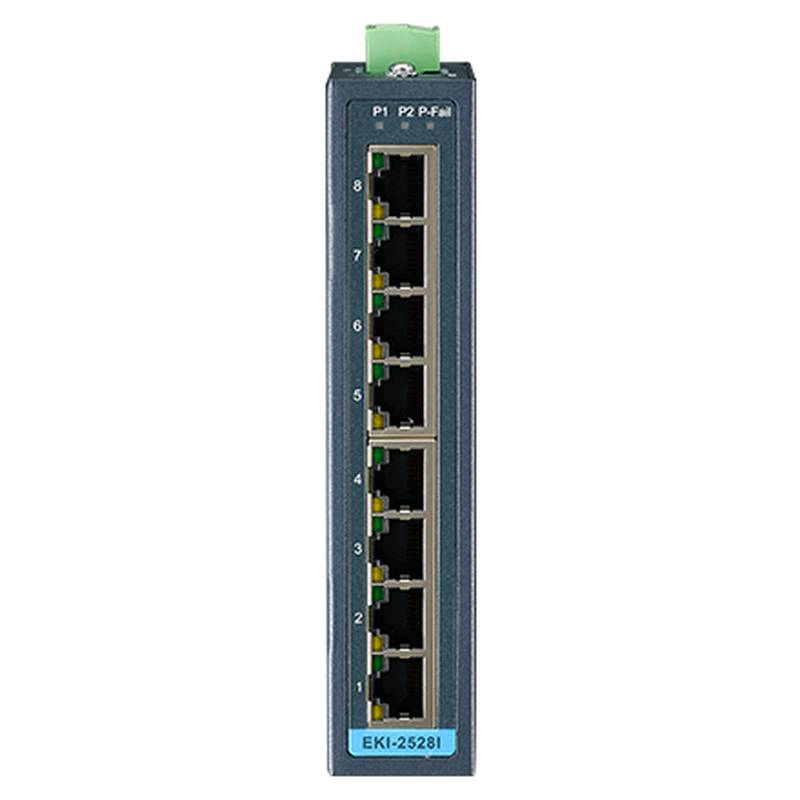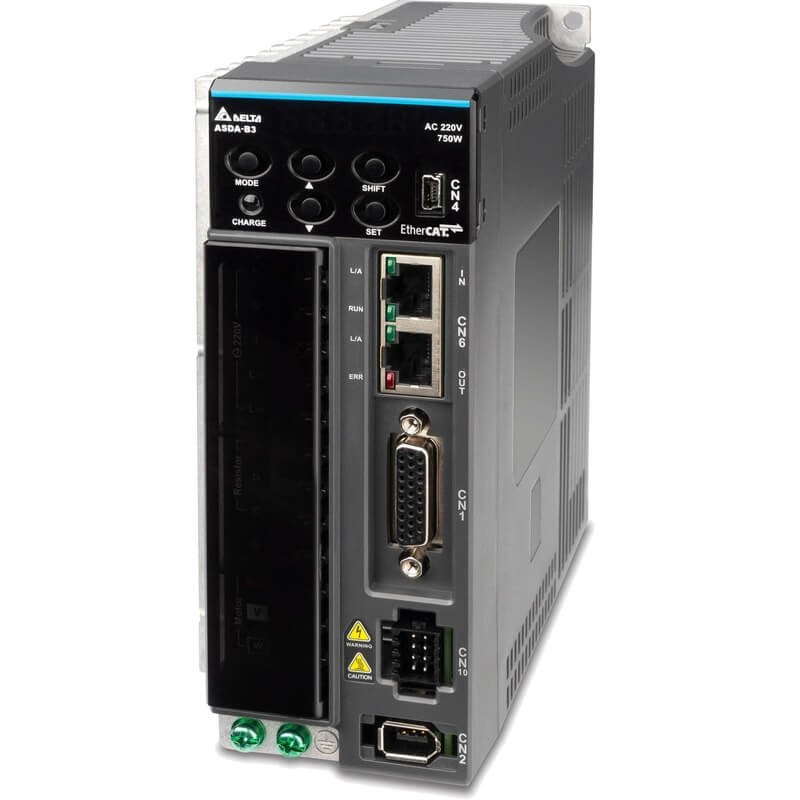
The YASKAWA V1000 Series VFD, specifically the VB4A0009BBA model, is a high-performance, compact, and user-friendly variable frequency drive designed for precise motor control across a broad spectrum of industrial applications. This 3kW unit offers a robust 7.2A output, delivering exceptional energy efficiency and operational reliability. Its core advantages lie in its sophisticated control algorithms, simplified setup, and robust build quality, making it a leading choice for engineers and facility managers seeking to optimize machinery performance and reduce energy consumption. Key technical parameters include a 3-phase input/output, a maximum output current of 7.2A, and a power rating of 3kW (4 HP).
Product Specifications
| Feature | Specification |
| :--------------------- | :-------------------------------------------------- |
| Model Number | VB4A0009BBA (V1000 Series) |
| Rated Power | 3 kW (4 HP) |
| Output Current | 7.2 A |
| Input Voltage | 3-Phase, 200-240V AC |
| Output Voltage | 3-Phase, 200-240V AC |
| Frequency Range | 0.01 to 400 Hz |
| Control Method | V/f Control, Advanced V/f Control, Vector Control |
| Protection Class | IP20 |
| Operating Temperature | -10°C to +50°C (with derating) |
| Mounting Type | Wall-mount / DIN rail mount |
| Communication Options | Built-in RS-422/485, optional network cards |
Core Features & Market Positioning
The YASKAWA V1000 VB4A0009BBA stands out in the competitive VFD market due to its "simplicity and performance" ethos. It integrates advanced control technologies, such as open-loop vector control, which provides precise speed and torque regulation without requiring an encoder. This differentiates it from simpler V/f-only drives by offering superior dynamic response and maintaining performance under varying load conditions. Its compact footprint and side-by-side mounting capability are significant advantages for applications with limited control panel space. Furthermore, Yaskawa's reputation for durability and reliability in harsh industrial environments positions the V1000 as a long-term, low-maintenance solution.
Key Application Scenarios
The versatility of the YASKAWA VB4A0009BBA V1000 makes it ideal for a wide array of applications where precise speed and torque control are paramount. This includes fan and pump applications, where VFDs enable significant energy savings by matching motor speed to system demand. It is also well-suited for conveyor systems, extruders, and general machine automation tasks common in manufacturing, food processing, and material handling industries. The drive's ability to handle 3-phase loads and its robust feature set ensure reliable operation in demanding industrial settings, simplifying motor control for engineers across various sectors.
Practical System Integration Guidance
Integrating the YASKAWA VB4A0009BBA into existing systems is streamlined by its intuitive programming interface and clear terminal layout. For wiring, ensure proper grounding and adherence to local electrical codes. The drive supports both digital and analog inputs for control signals, allowing flexible integration with PLCs and sensors. Parameter configuration for applications like fan or pump control typically involves setting basic motor data, acceleration/deceleration times, and desired operating modes. Advanced setup might include configuring the open-loop vector control for enhanced torque performance or setting up communication protocols for remote monitoring and control via Modbus or other network options.
Operation and Risk Mitigation
Safe operation of the YASKAWA V1000 VFD, model VB4A0009BBA, is critical and begins with proper installation and personnel training. Always disconnect power before performing any wiring or maintenance. Key parameters to monitor include motor temperature, current draw, and output frequency to prevent overload conditions. Common fault codes, such as "Overcurrent" (OC) or "Overvoltage" (OV), typically indicate issues with motor load, wiring, or supply voltage, requiring immediate investigation. Understanding the drive's protection features, like thermal overload and short-circuit protection, is essential for mitigating risks and ensuring longevity.
Scalability & Long-Term Value
The YASKAWA V1000 Series offers considerable scalability and long-term value, particularly through its compatibility with Yaskawa's broader automation ecosystem. The drive supports various communication options, including Modbus RTU, allowing seamless integration into supervisory control and data acquisition (SCADA) systems and IIoT platforms for predictive maintenance and advanced analytics. For users requiring more advanced functionalities or higher power ratings, the V1000 serves as an excellent entry point into Yaskawa's comprehensive range of VFDs and servo solutions, ensuring upgrade paths that maintain a consistent operational philosophy and programming structure.
Frequently Asked Questions (FAQs)
What are the primary benefits of the YASKAWA V1000 VFD?
The YASKAWA V1000 VB4A0009BBA excels in energy efficiency, precisely controlling motor speed to reduce power consumption. It offers advanced control modes like open-loop vector control for superior torque performance.
Its compact design and easy setup reduce installation time and panel space requirements. The drive's robust construction ensures long-term reliability in industrial environments.
Users benefit from reduced maintenance costs due to its durable build and fewer mechanical wear parts compared to traditional methods.
How do I wire the YASKAWA VB4A0009BBA V1000 VFD for a 3-phase motor?
Ensure the main power supply matches the VFD's input voltage specifications (200-240V AC, 3-phase). Connect the incoming power lines (L1, L2, L3) to the designated input terminals (R, S, T).
Connect the three motor leads (U, V, W) to the output terminals of the VFD. Always follow the wiring diagrams in the manual and ensure proper grounding for safety and noise reduction.
If using an external braking resistor, connect it to the appropriate braking terminals (e.g., B1, B2) as specified in the technical documentation for regenerative braking applications.
What is the maximum motor size this VFD can control?
The YASKAWA VB4A0009BBA model is rated for 3kW (4 HP) applications. It delivers a maximum output current of 7.2A.
This rating is suitable for standard industrial motors within this power range that require precise speed and torque management. It is crucial to match the motor's nameplate current rating with the VFD's output current capacity.
Always consult the motor's specifications and the VFD's derating curves for operation at higher ambient temperatures or frequencies below 20Hz.
Can the V1000 VFD be controlled remotely?
Yes, the YASKAWA V1000 Series supports remote control capabilities through various communication methods. It features built-in RS-422/485 ports for Modbus RTU communication.
Optional network cards can be installed to enable communication over industrial Ethernet protocols like EtherNet/IP, PROFINET, or DeviceNet, allowing integration into sophisticated control systems.
Remote control allows for external start/stop commands, speed adjustments, and parameter monitoring or modification, enhancing automation and operational flexibility.
What are common applications for the YASKAWA V1000 VB4A0009BBA?
This VFD is highly effective for controlling fans and pumps, enabling significant energy savings by matching output speed to system demand.
It is widely used in material handling systems such as conveyors, elevators, and escalators where smooth acceleration and precise speed control are essential.
Other common applications include extruders, mixers, machine tools, and general automation equipment across manufacturing, food processing, and packaging industries.
How do I perform basic parameter setup on the V1000?
Begin by entering basic motor parameters, including rated voltage, frequency, current, and RPM, found on the motor's nameplate.
Configure the desired acceleration and deceleration times to ensure smooth starting and stopping of the connected motor and load.
Select the appropriate control method, such as V/f control for simple applications or open-loop vector control for enhanced torque performance under varying loads.
What is open-loop vector control, and why is it important?
Open-loop vector control allows the VFD to estimate the motor's magnetic flux and torque without needing a speed encoder. This provides superior speed regulation and torque response compared to standard V/f control.
It is particularly beneficial for applications requiring precise speed holding, even when load conditions change dynamically, such as on conveyors or during winding operations.
This advanced control algorithm enhances motor performance, allowing the YASKAWA V1000 to operate more efficiently and reliably under challenging industrial demands.
What is the IP rating of the YASKAWA V1000 VB4A0009BBA, and what does it mean?
The YASKAWA V1000 VB4A0009BBA has an IP20 rating. This means it is protected against solid objects greater than 12.5mm in diameter (like a finger) and has no protection against water.
This rating indicates the drive is designed for clean, dry indoor environments where it is protected from direct physical contact and dust ingress.
For applications in more demanding environments with dust, moisture, or washdown requirements, an appropriate enclosure or a VFD with a higher IP rating would be necessary.
What are common fault codes for the V1000, and how can I troubleshoot them?
A common fault is "OC" (Overcurrent), which typically indicates the motor is drawing too much current, possibly due to a jammed load or incorrect motor parameters. Check for mechanical issues or re-verify motor data.
"OV" (Overvoltage) or "UV" (Undervoltage) faults suggest issues with the incoming power supply fluctuations. Ensure the supply voltage is within the VFD's operating range.
"E3" or "Overload" faults indicate the motor is running at an excessive load for an extended period. Reduce the load, increase acceleration times, or consider a VFD with a higher current rating if consistently overloaded.
How does the V1000 contribute to energy savings?
The VFD controls motor speed, allowing it to operate at the lowest speed necessary for the task, significantly reducing energy consumption compared to running at full speed and using mechanical means to control output.
Fan and pump applications see the most substantial savings, as power consumption is proportional to the cube of the speed. Even a small reduction in speed yields considerable energy benefits.
By precisely matching motor output to demand, the V1000 minimizes wasted energy, leading to lower electricity bills and a reduced carbon footprint for the facility.

























